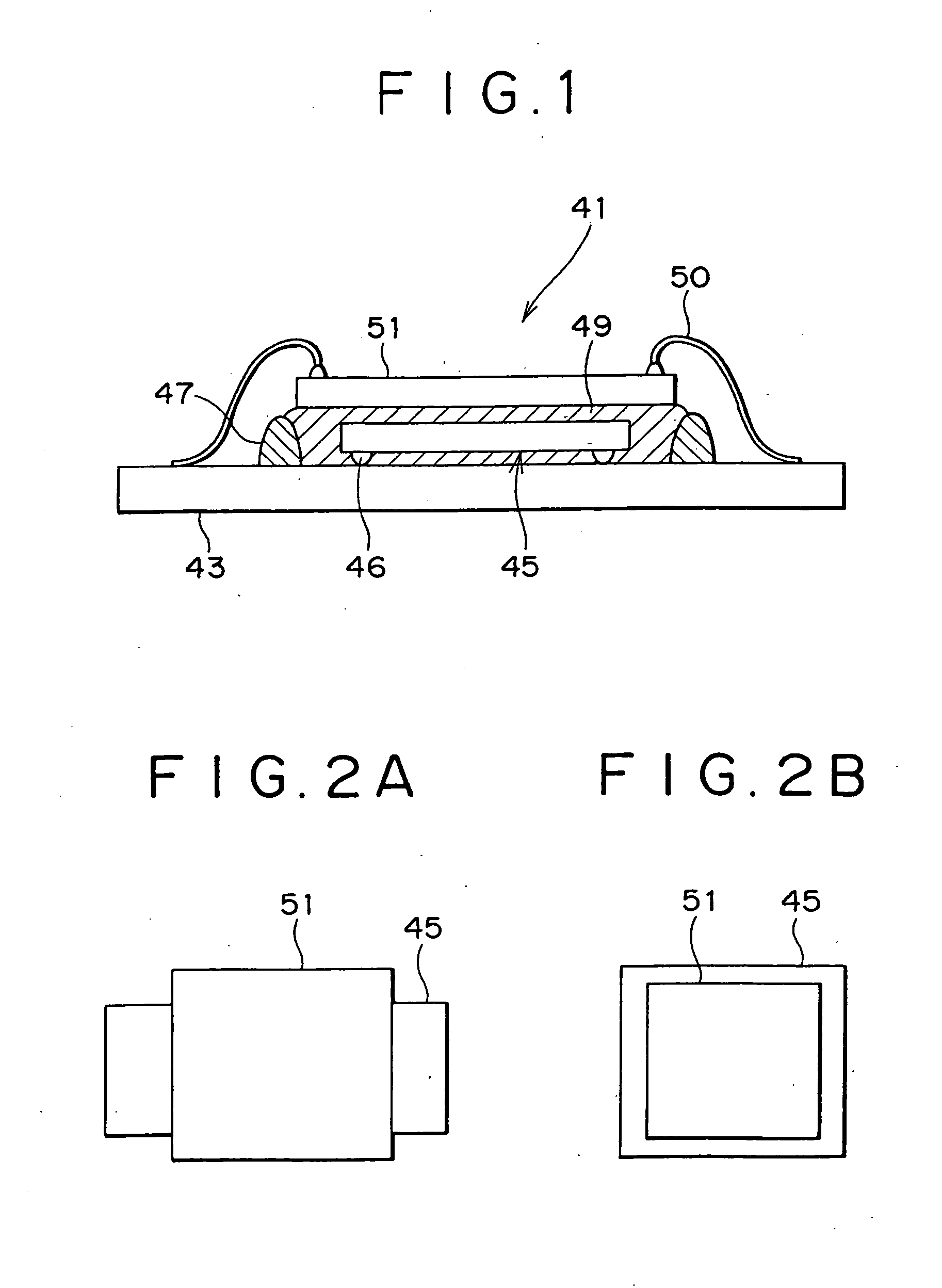Semiconductor device and fabrication method thereof
a technology of semiconductor devices and semiconductor elements, applied in semiconductor devices, semiconductor/solid-state device details, electrical apparatus, etc., can solve the problems of limiting the relationship between the upper layer semiconductor element, and the outer size of the lower layer semiconductor element must be larger, so as to increase the filing ratio of the sealing resin and the viscosity of the sealing resin
- Summary
- Abstract
- Description
- Claims
- Application Information
AI Technical Summary
Benefits of technology
Problems solved by technology
Method used
Image
Examples
Embodiment Construction
[0025] Hereinafter, preferred embodiments of a semiconductor device and a semiconductor device structure will be described in detail with reference to the drawings.
[0026]FIG. 1 is a sectional view of a semiconductor device of the present invention; FIGS. 2A and 2B are views each illustrating a combination example of outer sizes of semiconductor elements; and FIG. 3 is an enlarged sectional view of an essential portion of a modification of the semiconductor device shown in FIG. 1.
[0027] In a semiconductor device 41 according to this embodiment, a first semiconductor element (lower layer semiconductor element) 45 is bonded, in a flip-chip bonding manner, to a wiring board 43 by means of bumps 46. A resin peripheral wall 47 is formed on the wiring board 43 in such a manner as to surround the first semiconductor element 45. The shape of the resin peripheral wall 47 is determined by an electrode area of a second semiconductor element (which will be described later). In other words, the...
PUM
 Login to View More
Login to View More Abstract
Description
Claims
Application Information
 Login to View More
Login to View More - R&D
- Intellectual Property
- Life Sciences
- Materials
- Tech Scout
- Unparalleled Data Quality
- Higher Quality Content
- 60% Fewer Hallucinations
Browse by: Latest US Patents, China's latest patents, Technical Efficacy Thesaurus, Application Domain, Technology Topic, Popular Technical Reports.
© 2025 PatSnap. All rights reserved.Legal|Privacy policy|Modern Slavery Act Transparency Statement|Sitemap|About US| Contact US: help@patsnap.com



